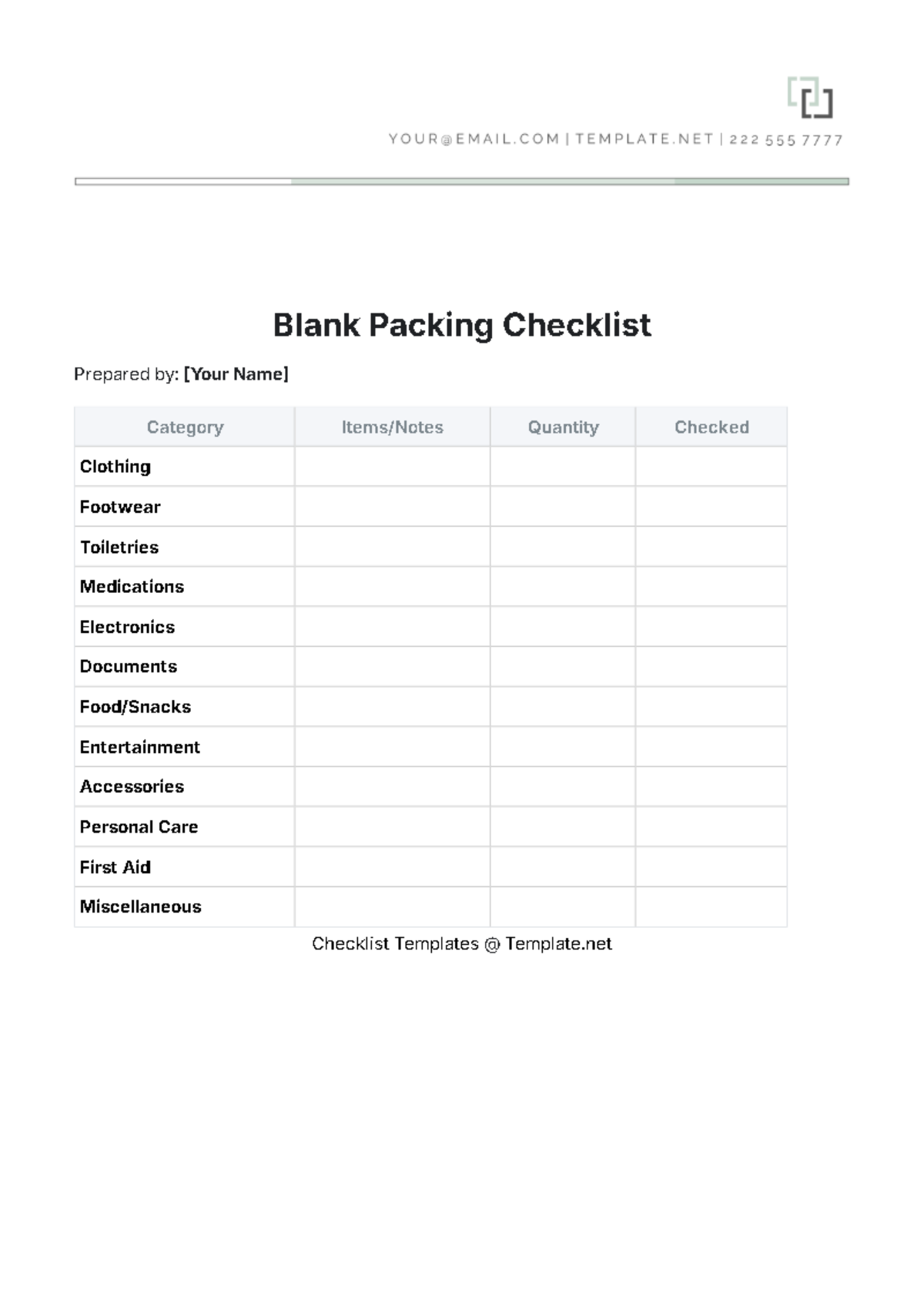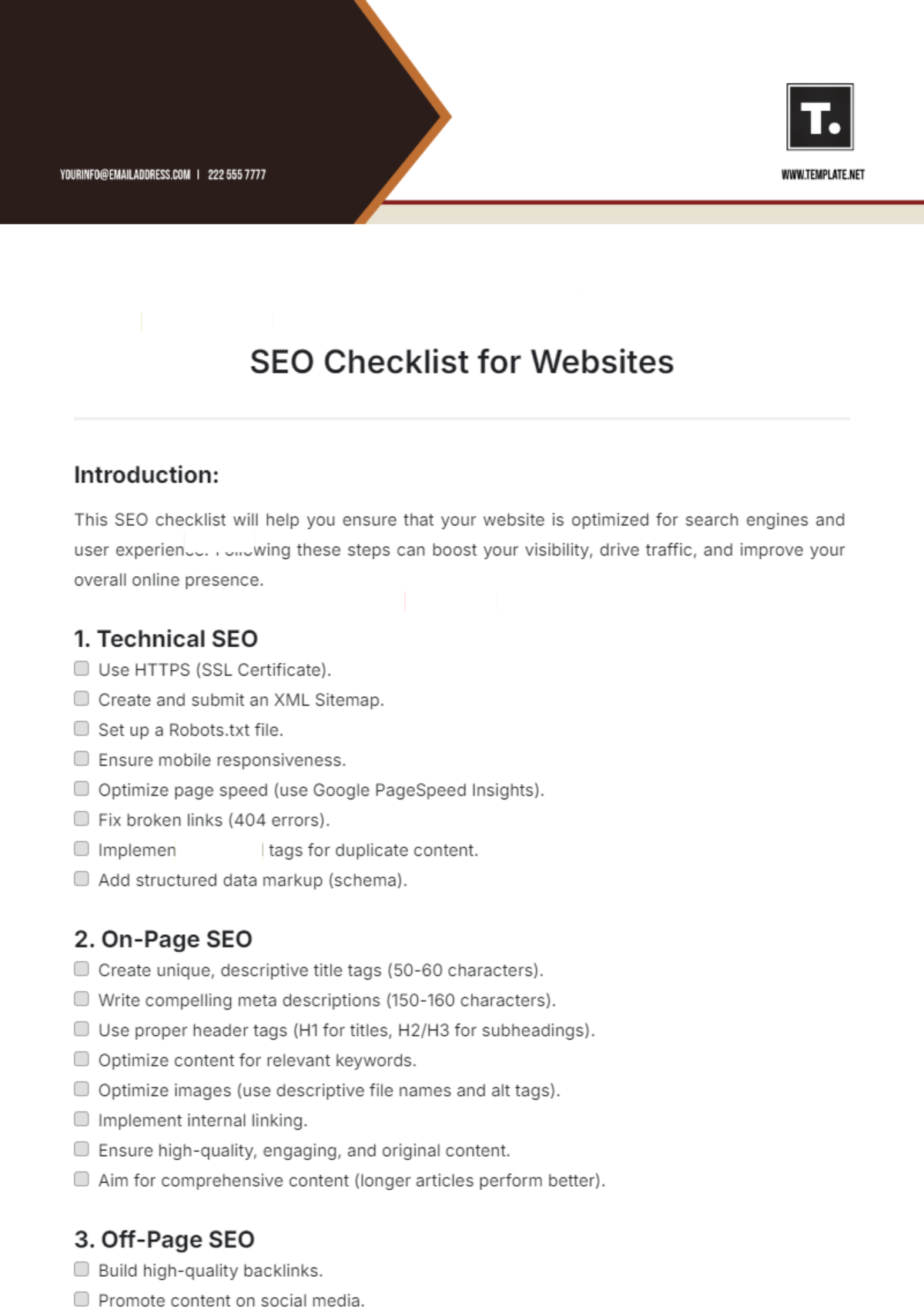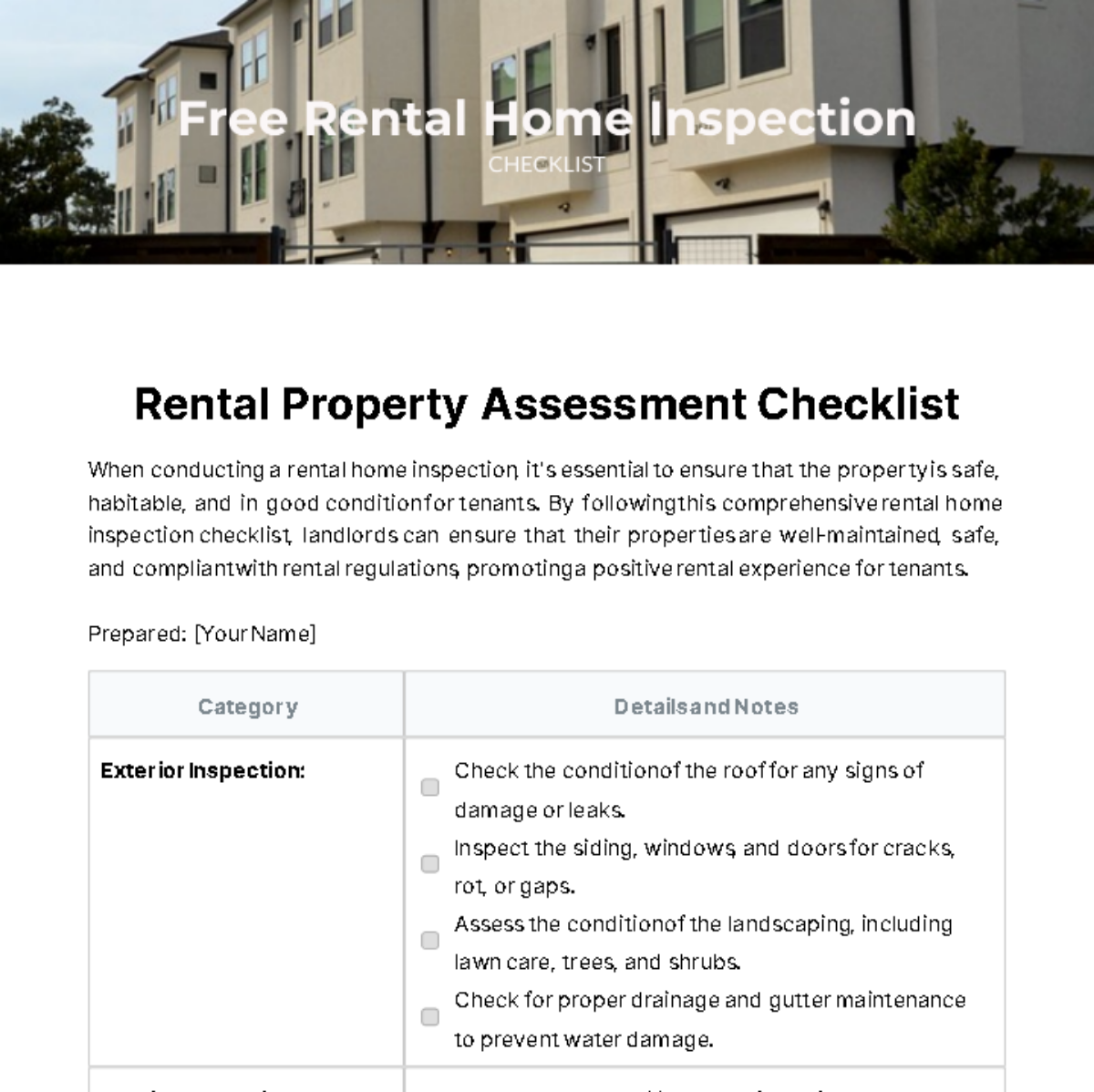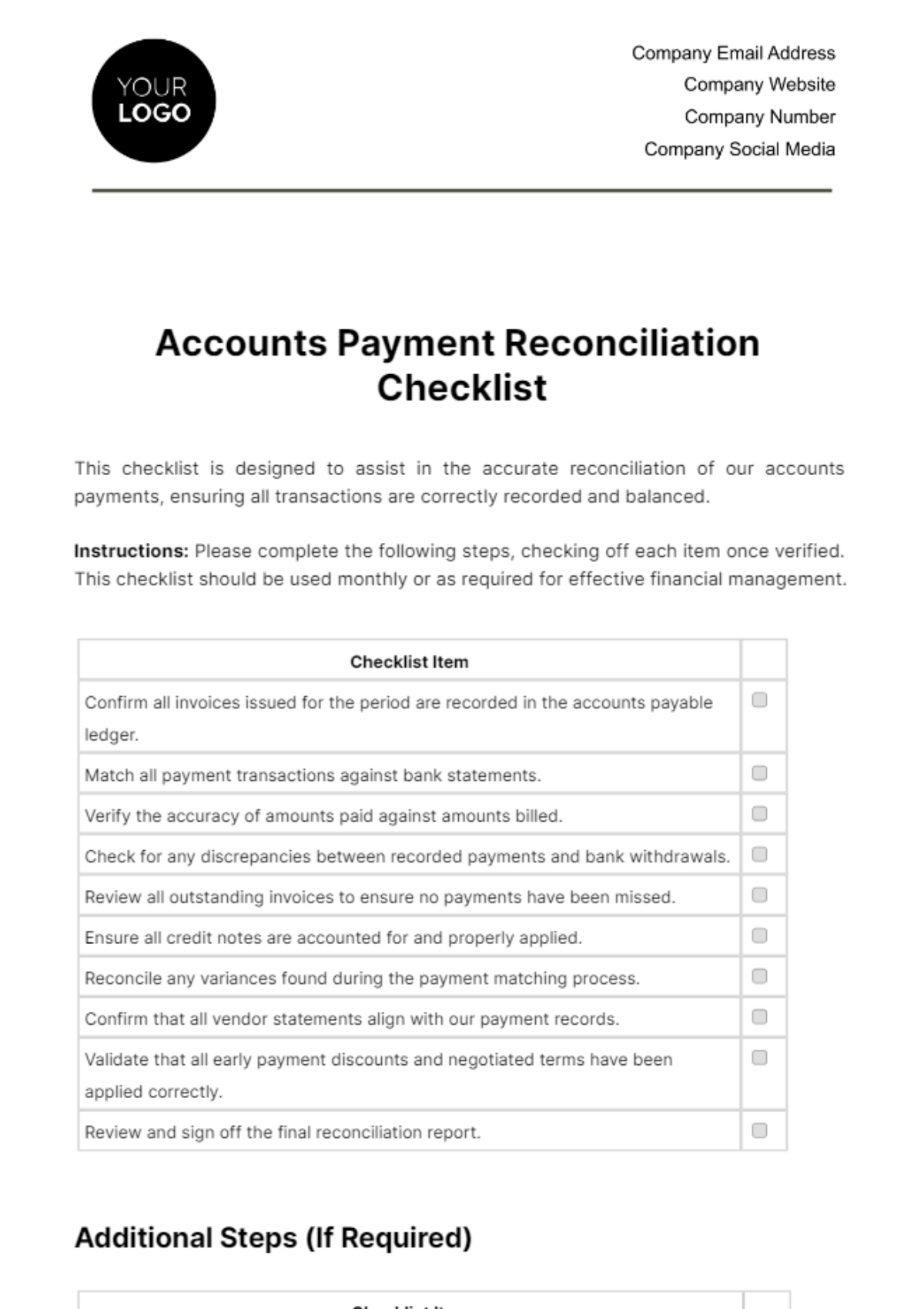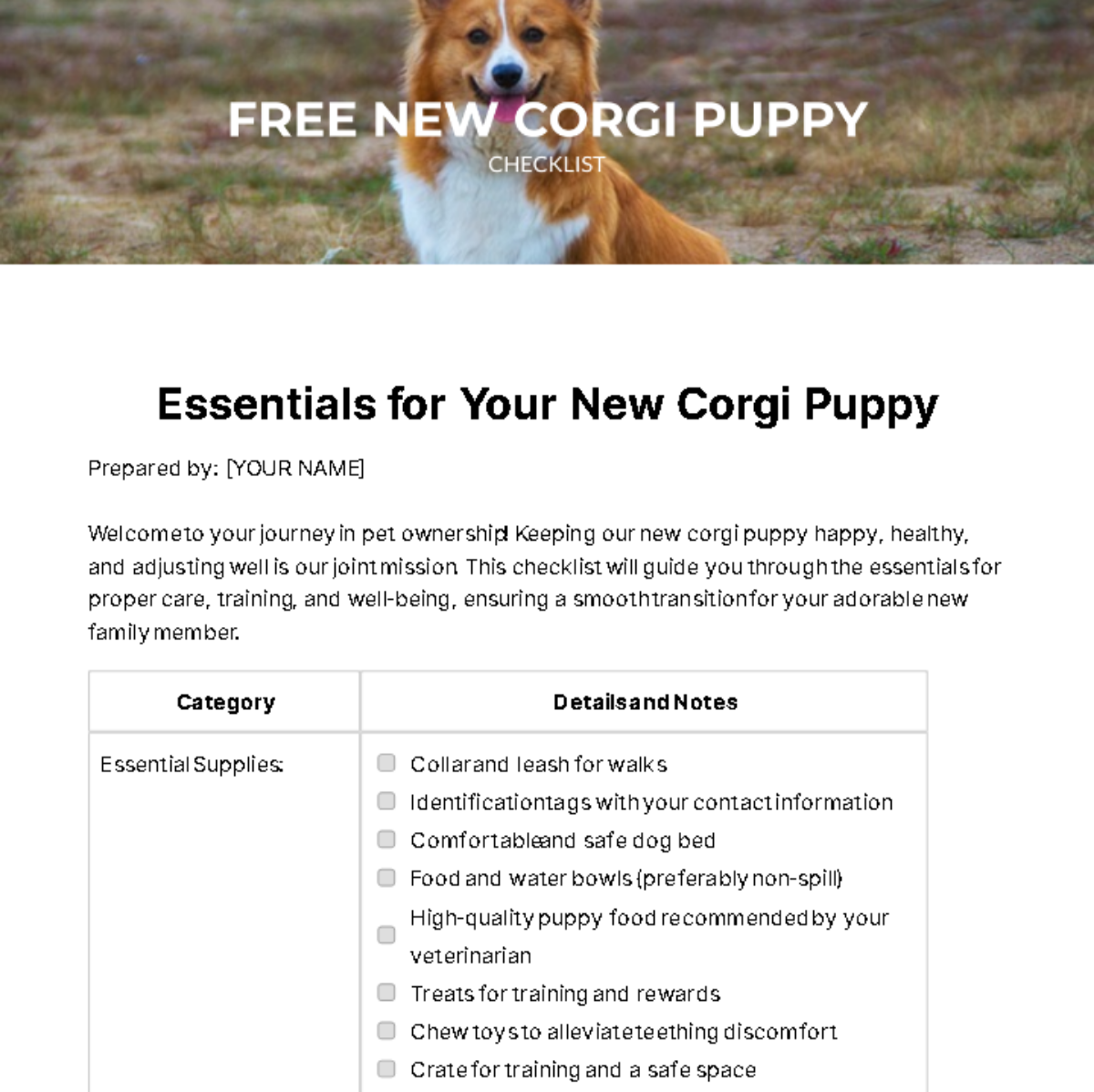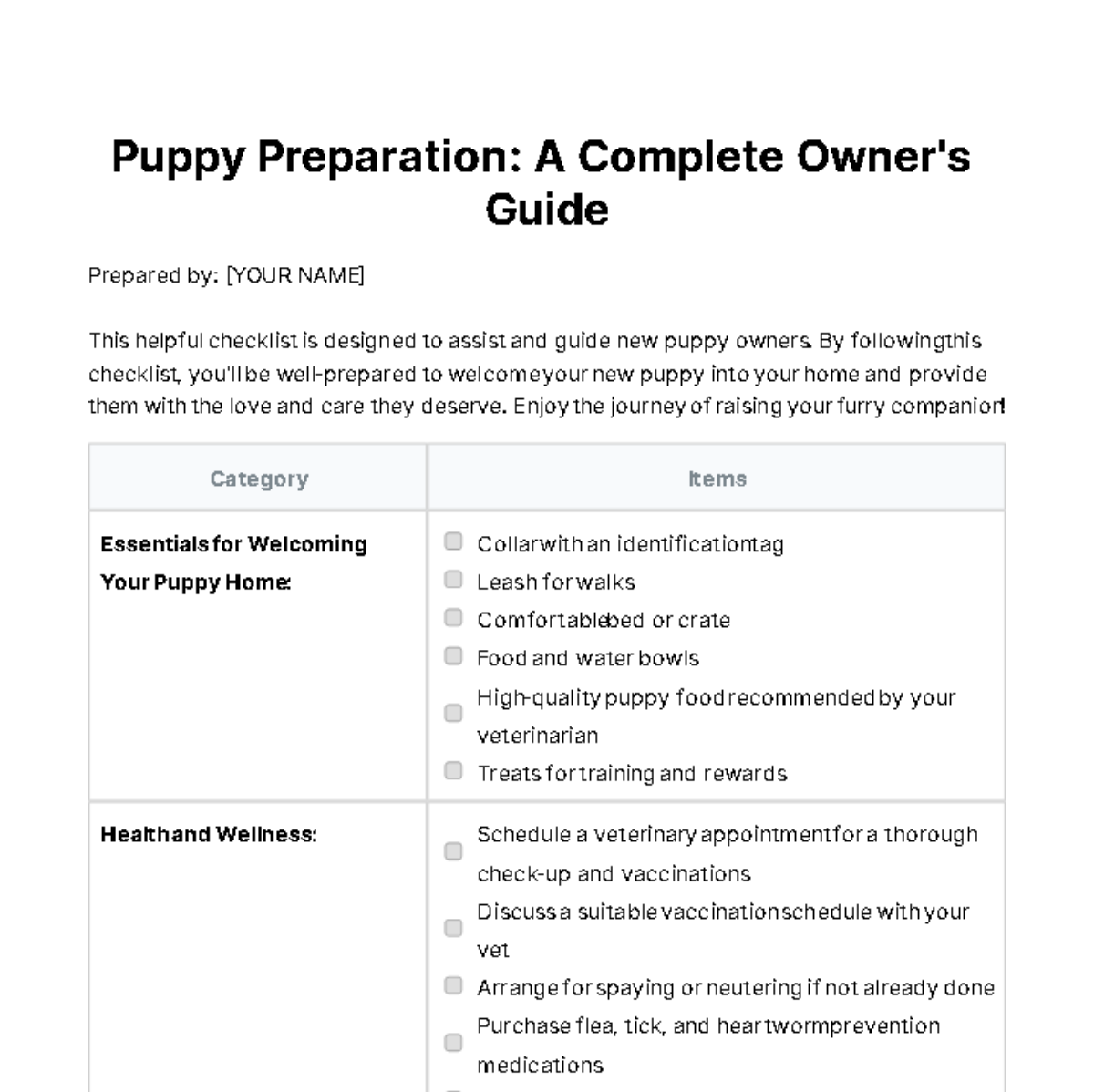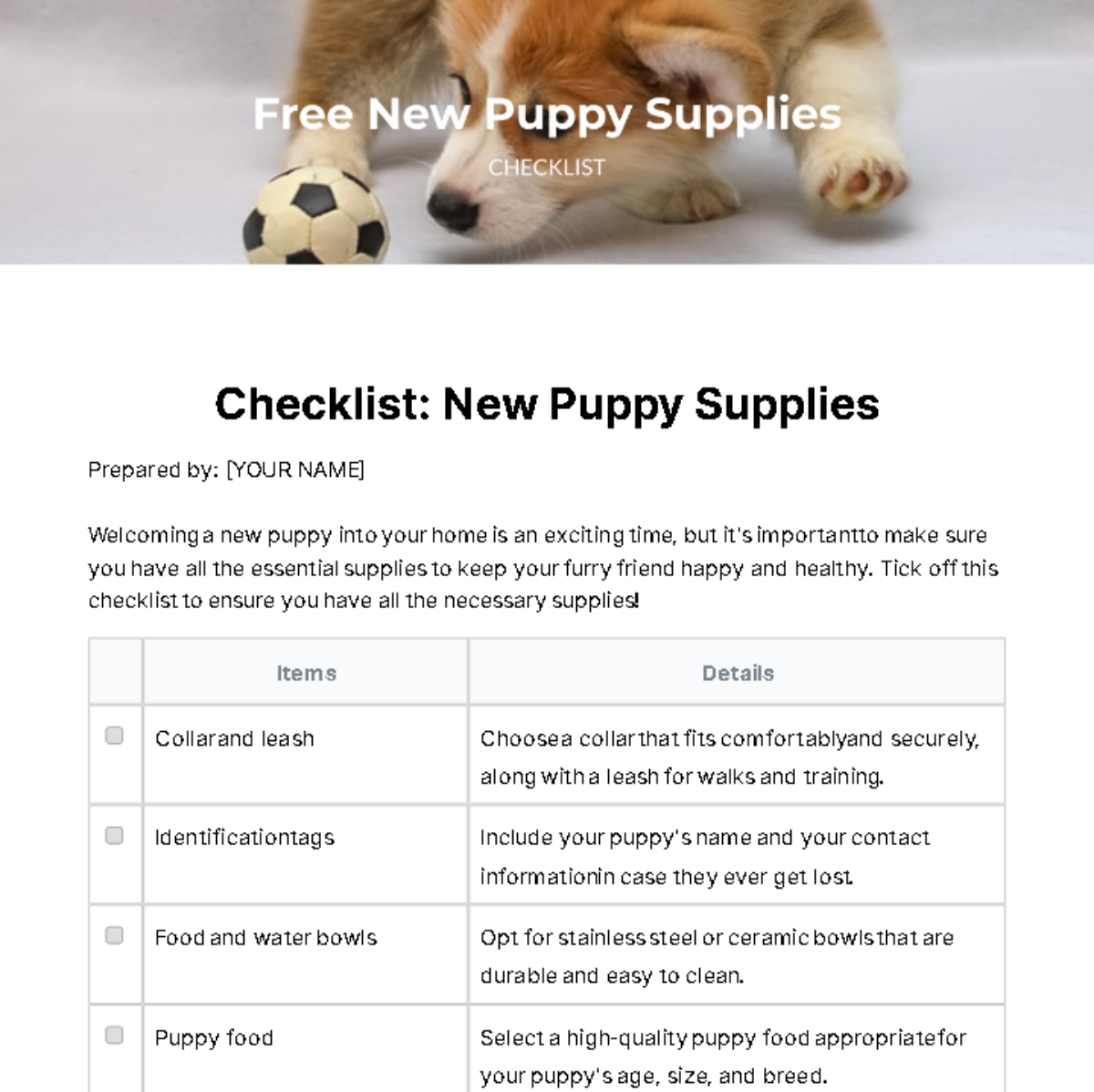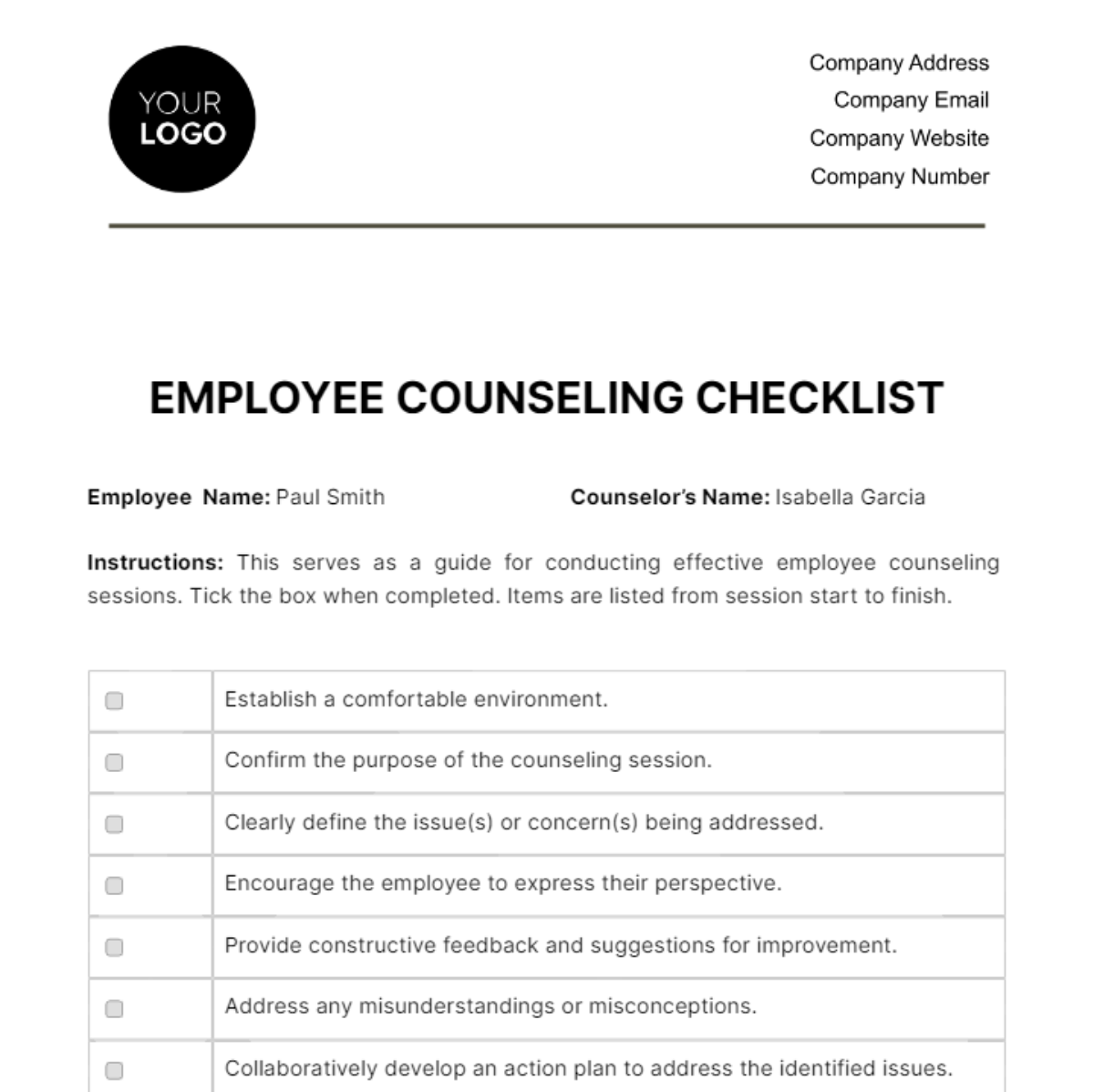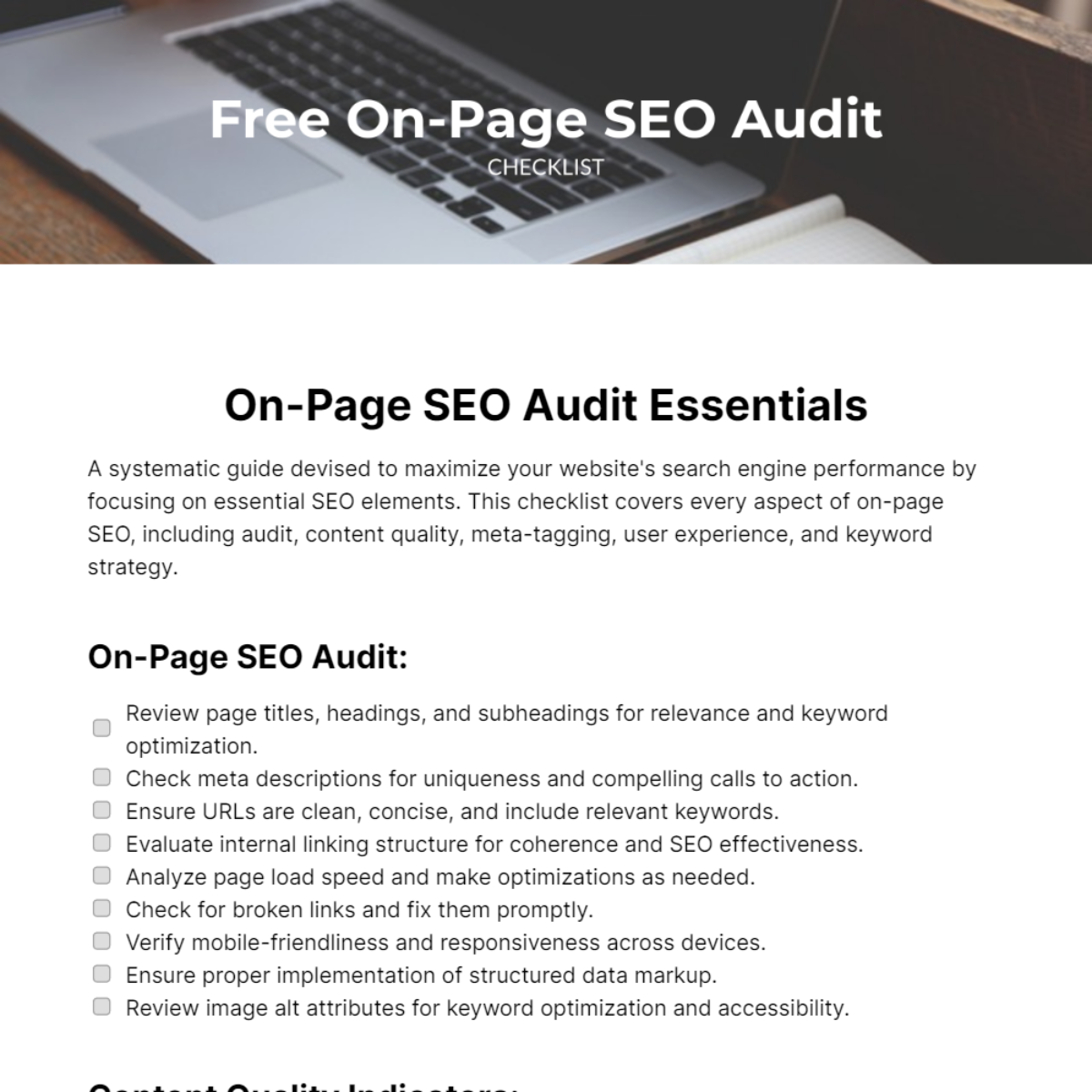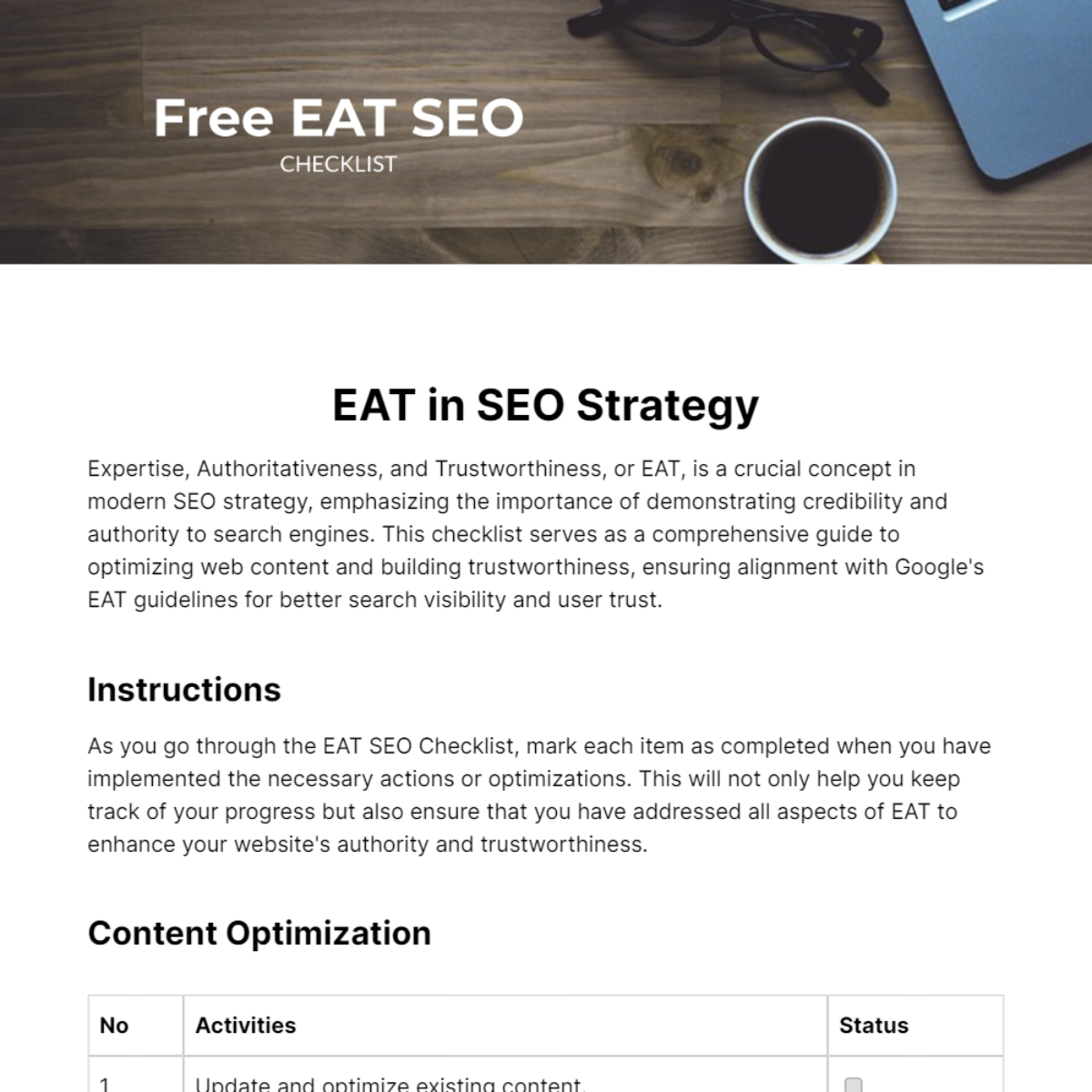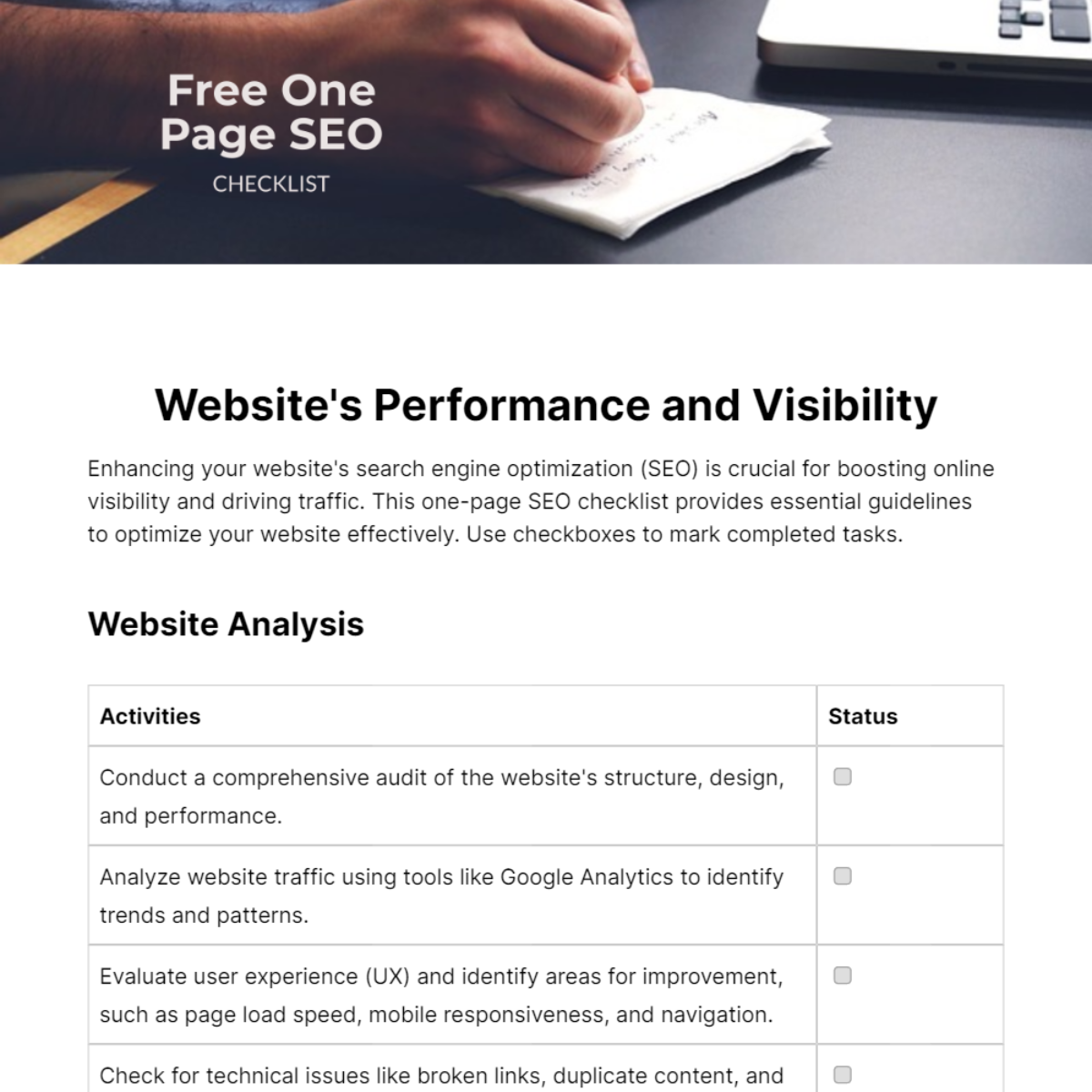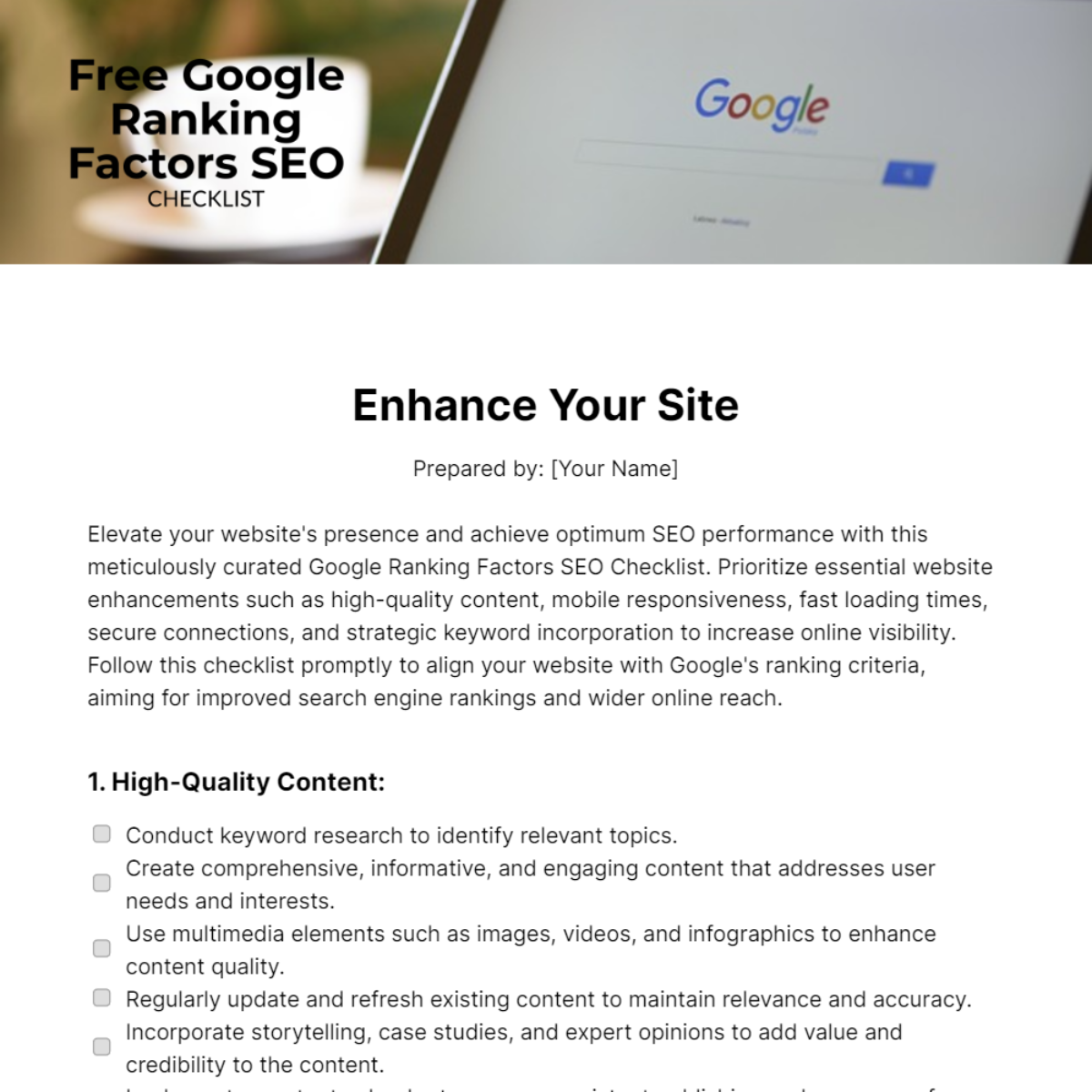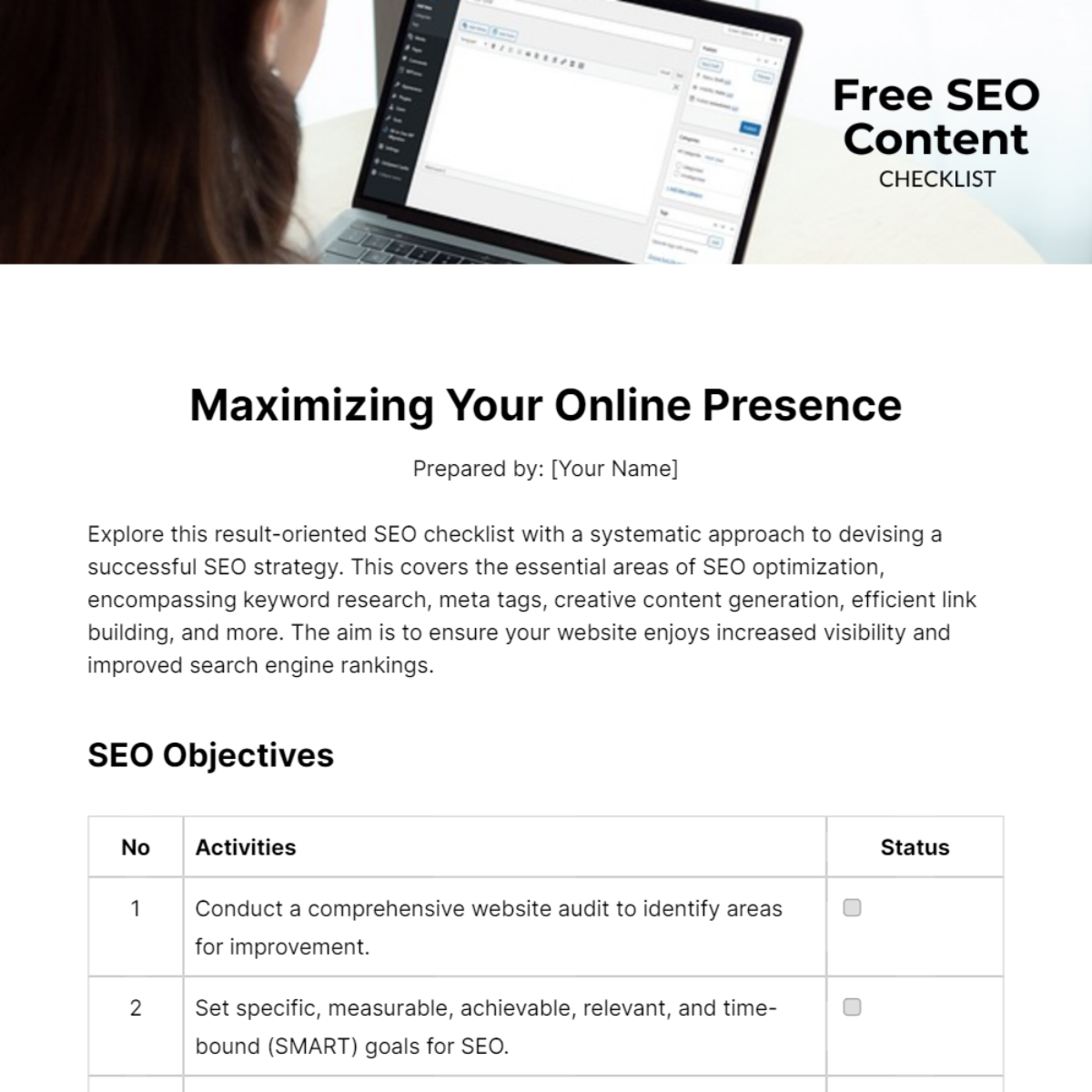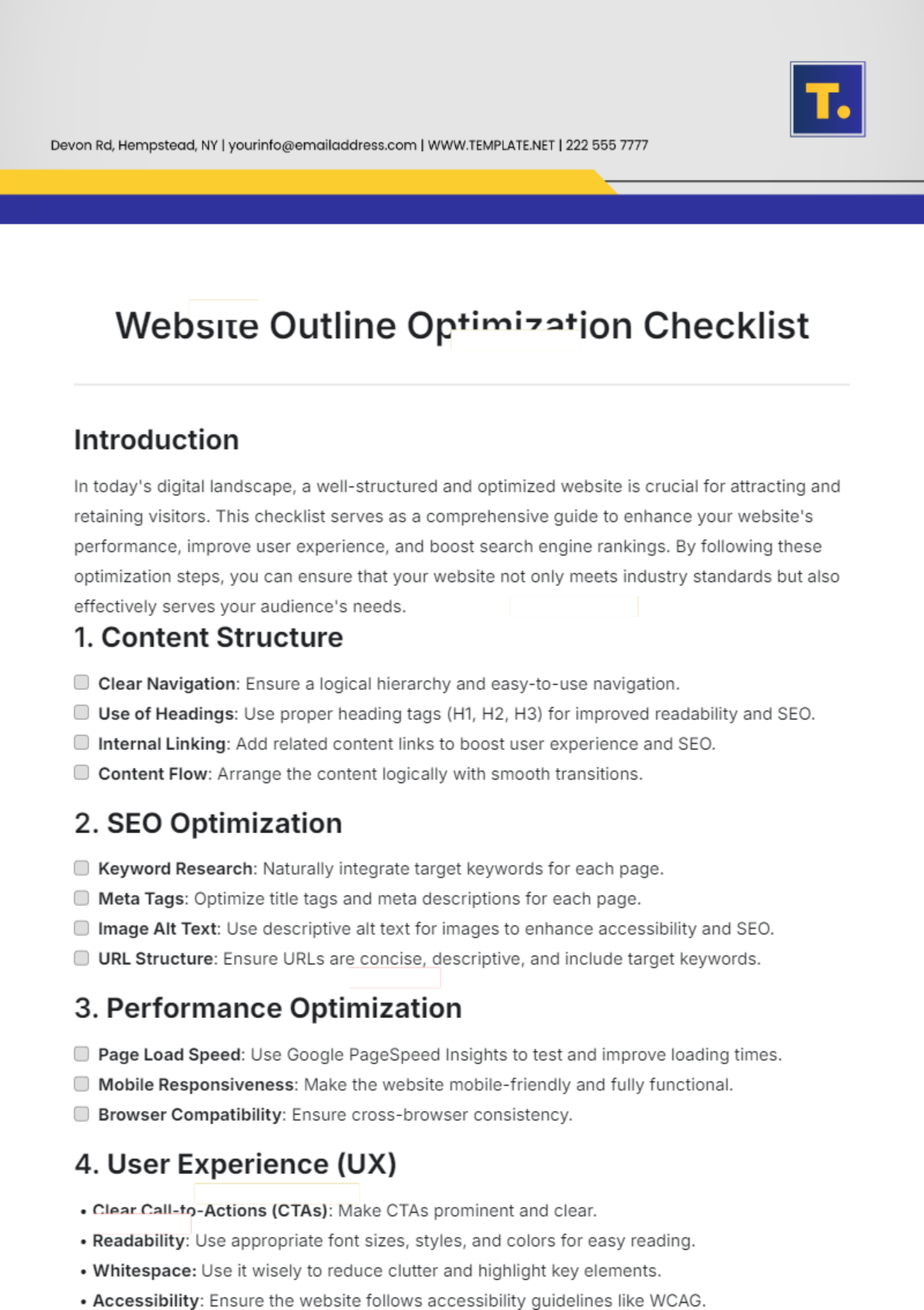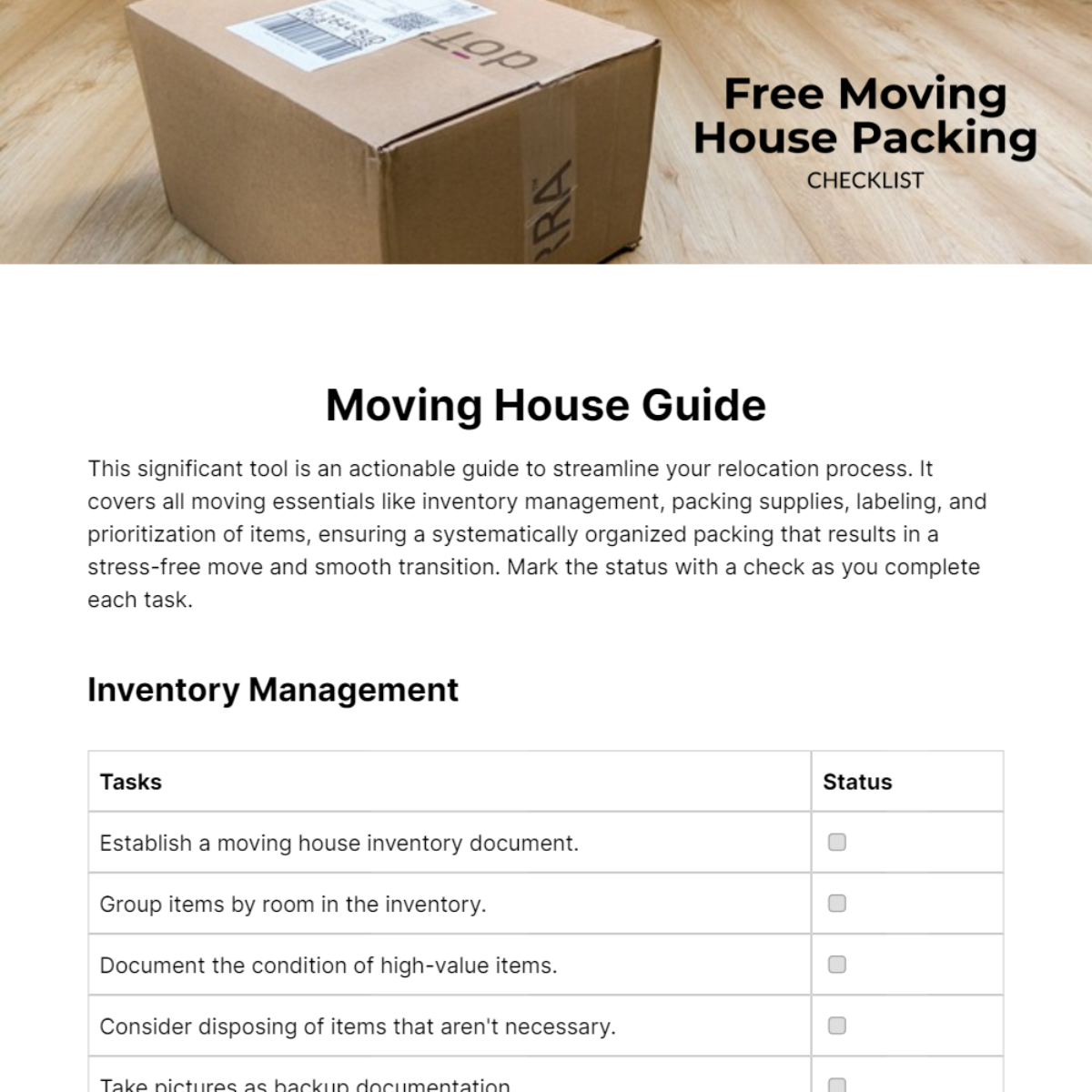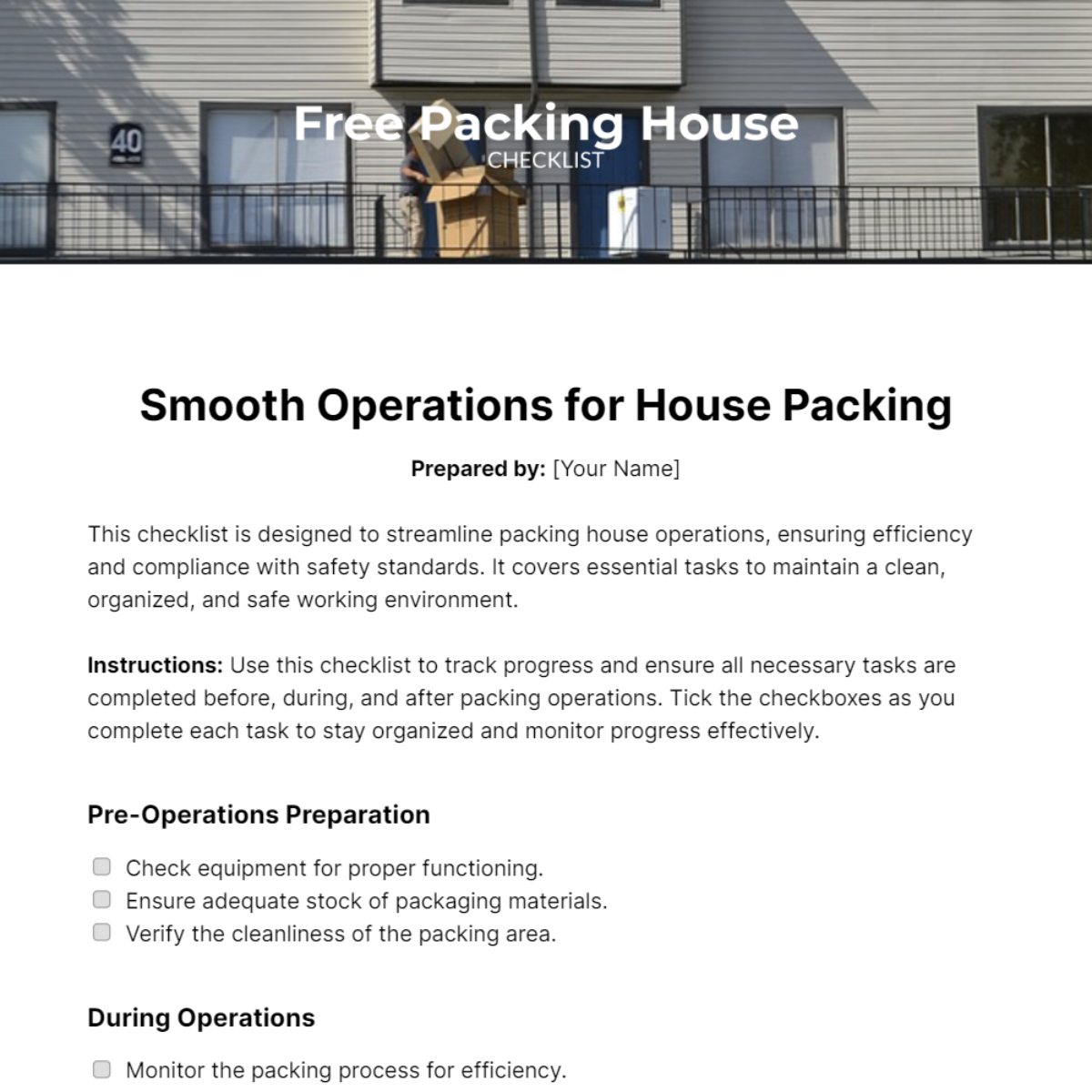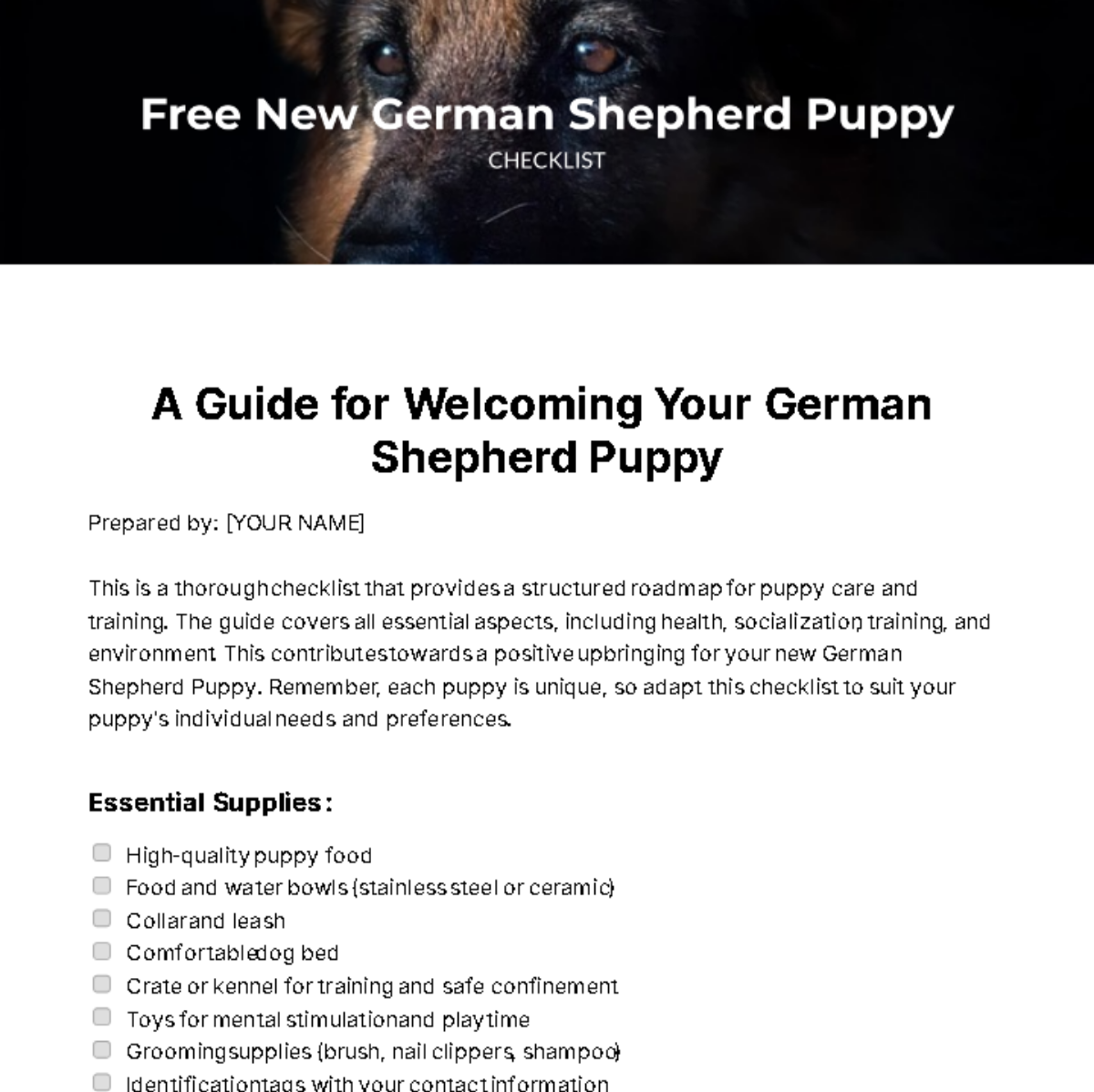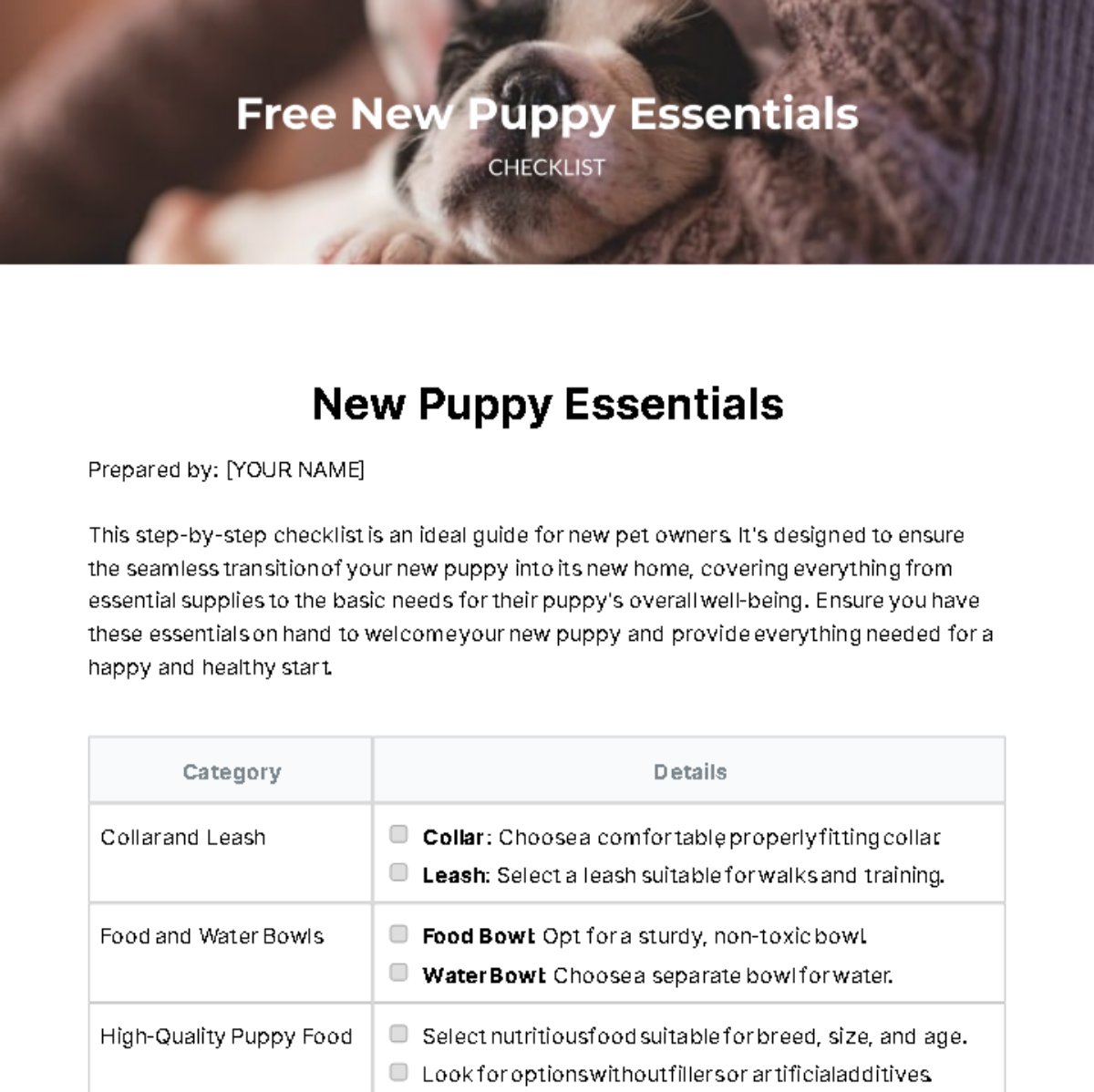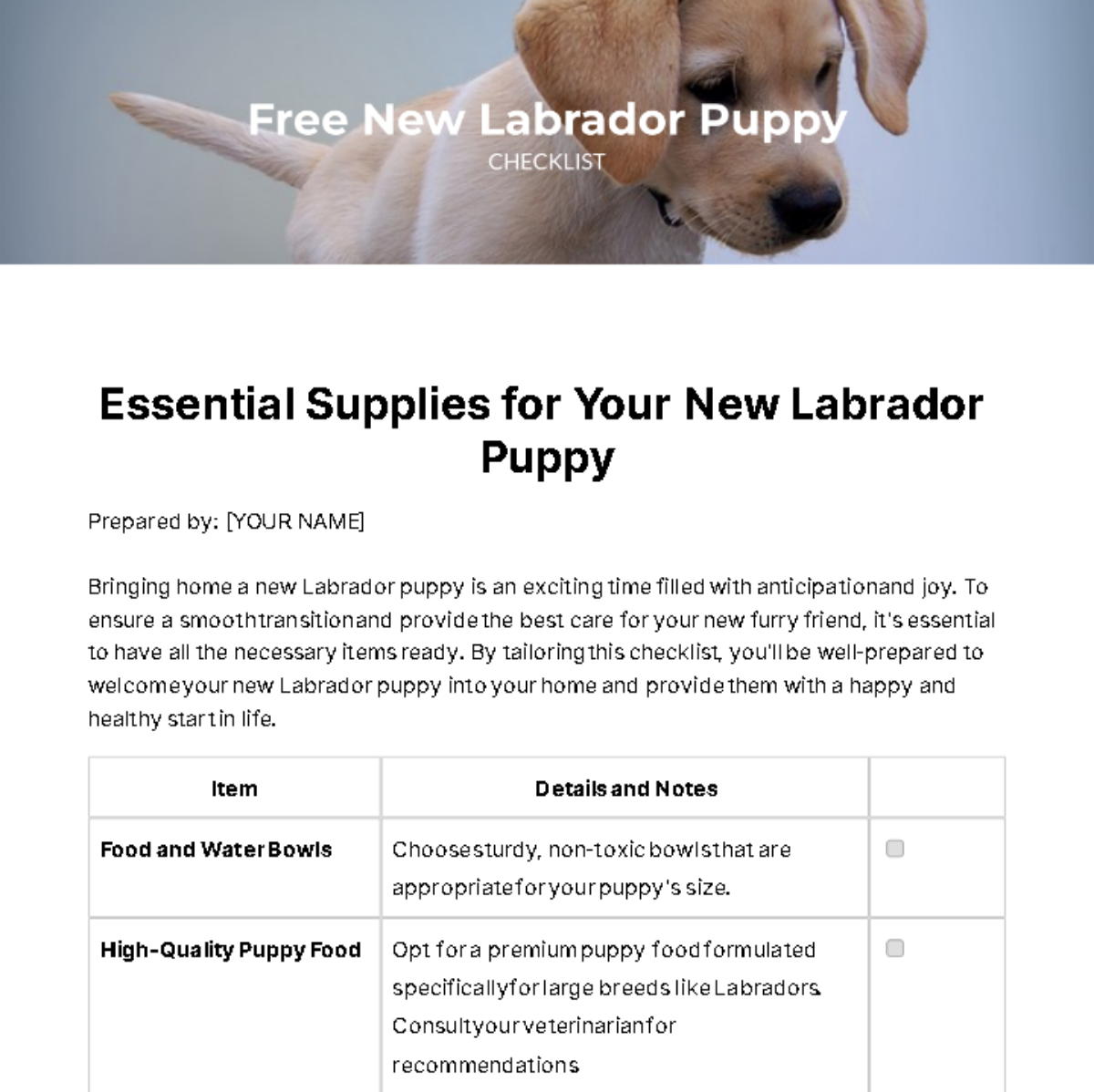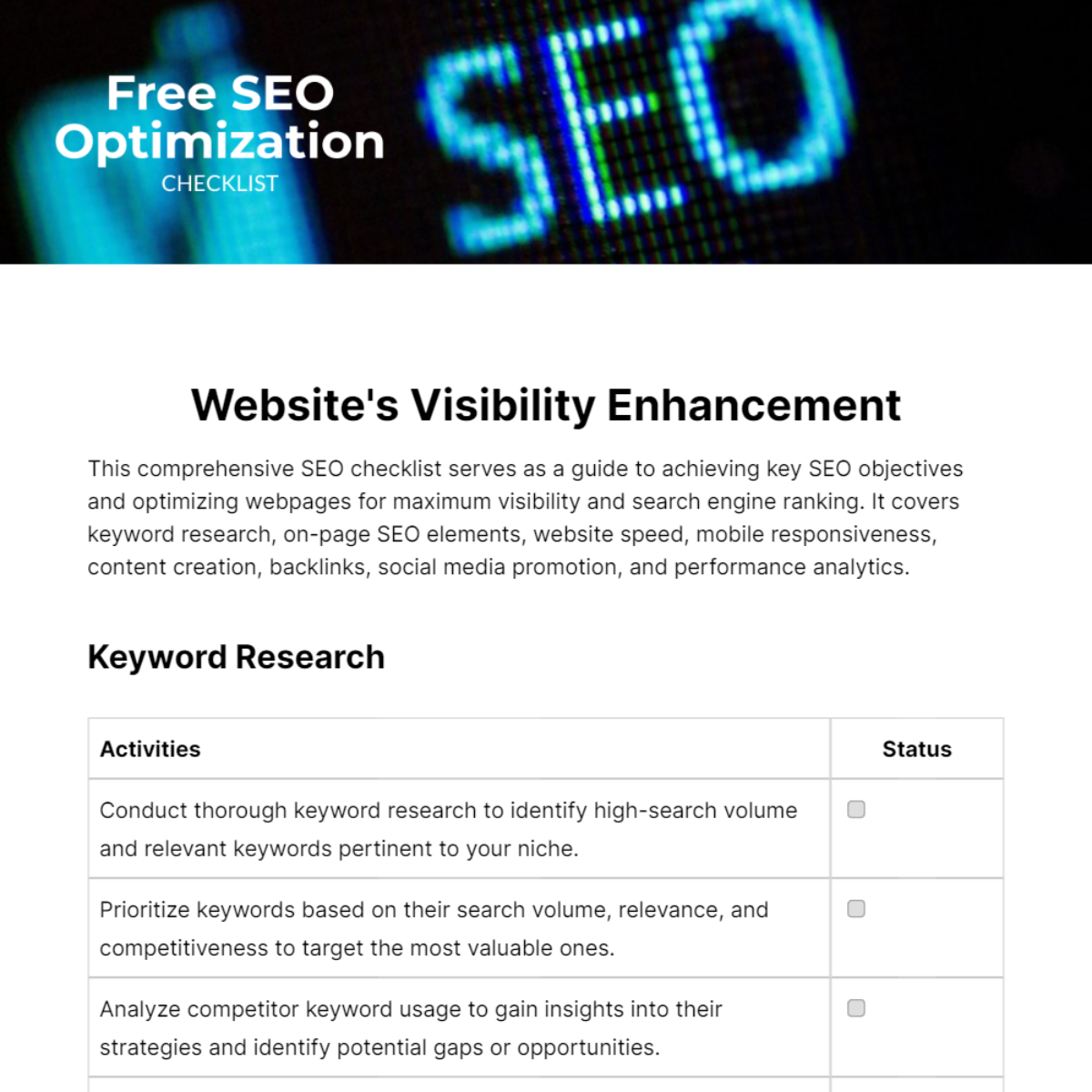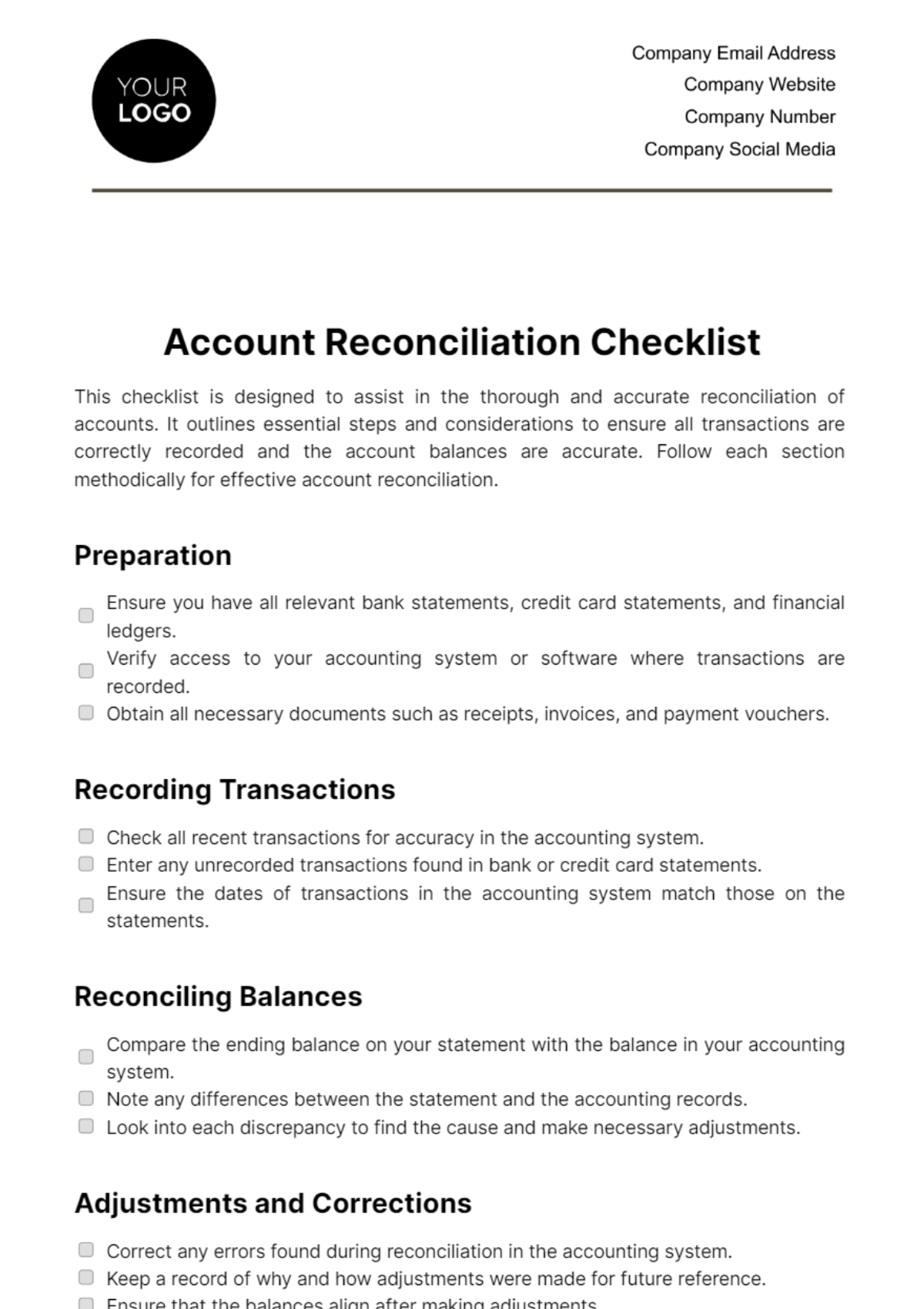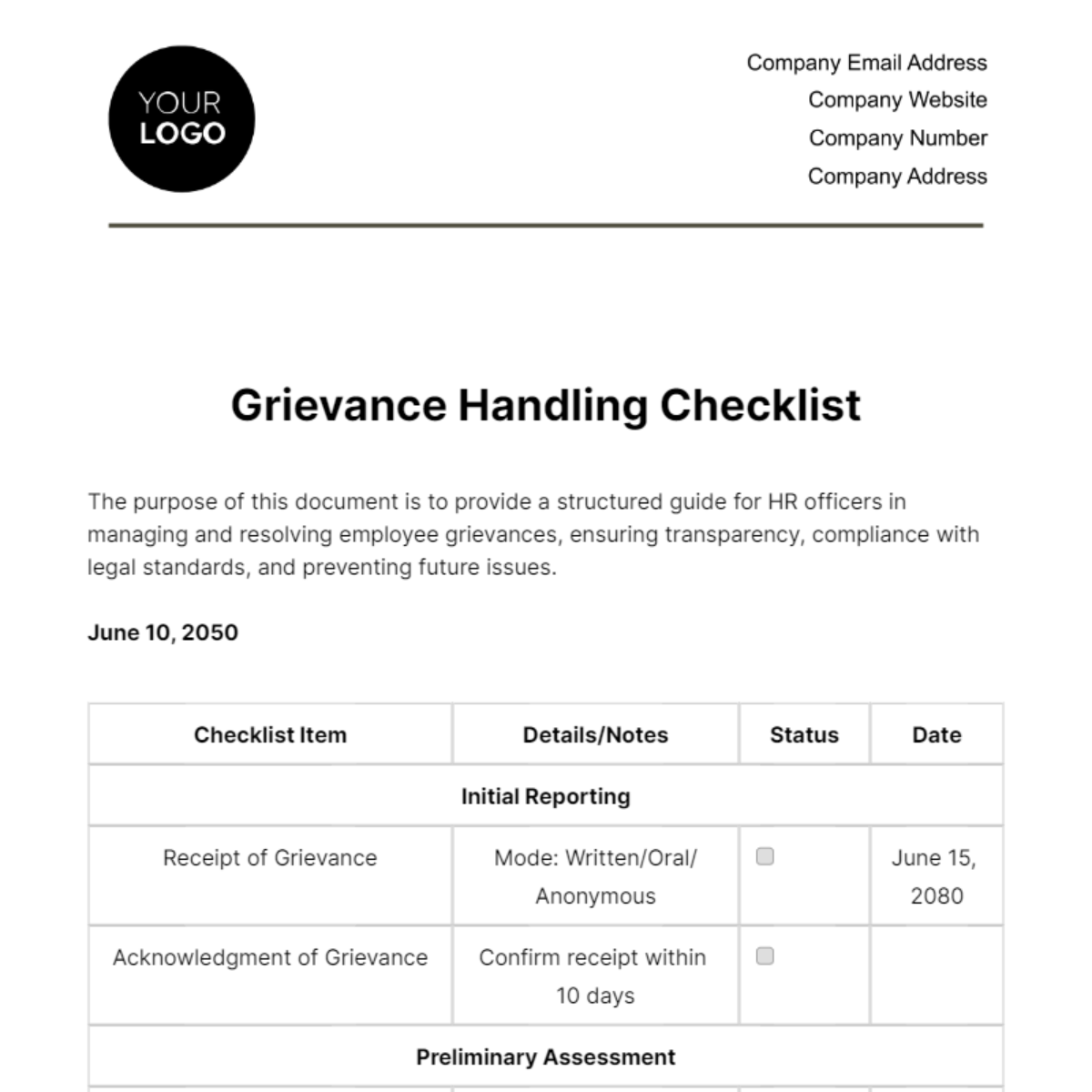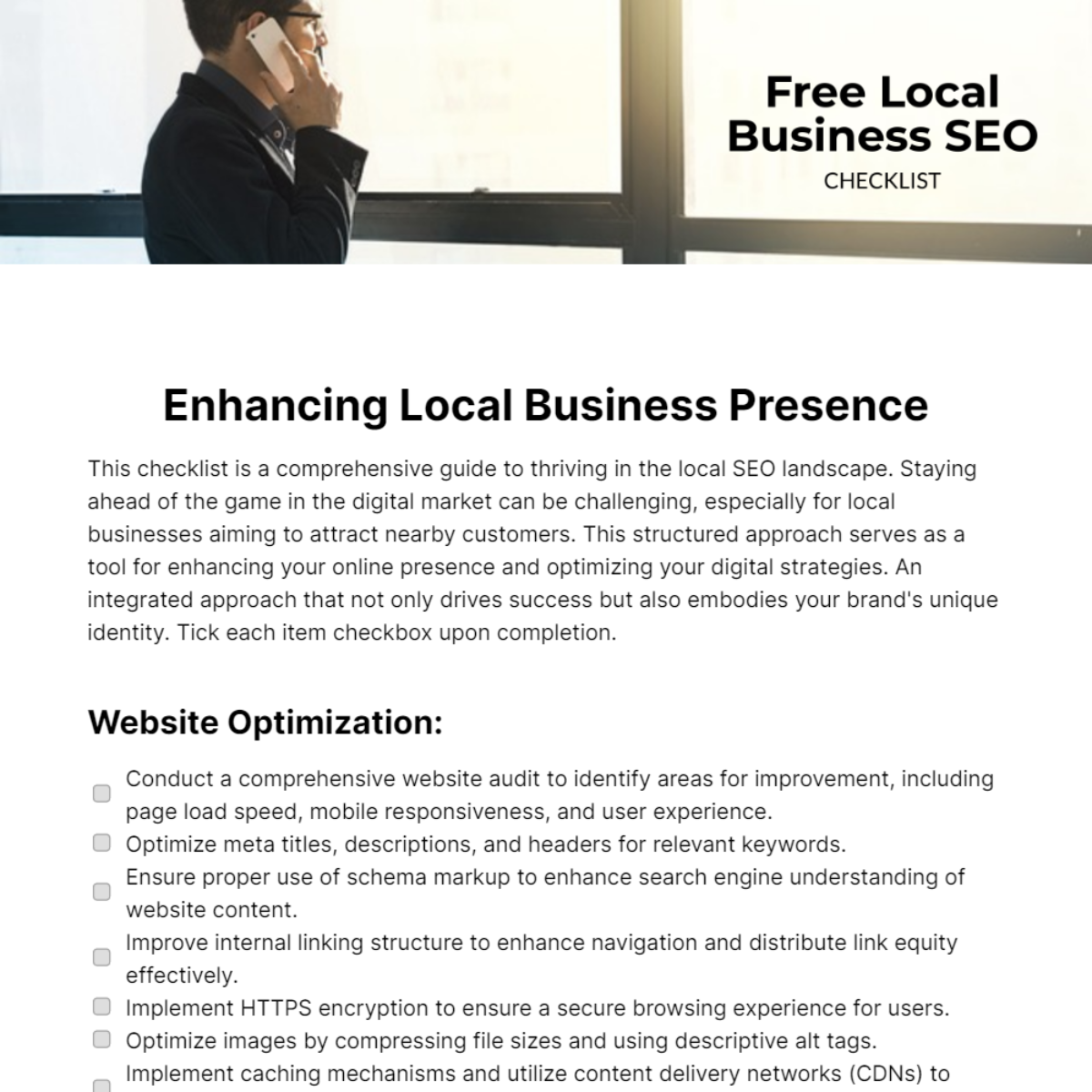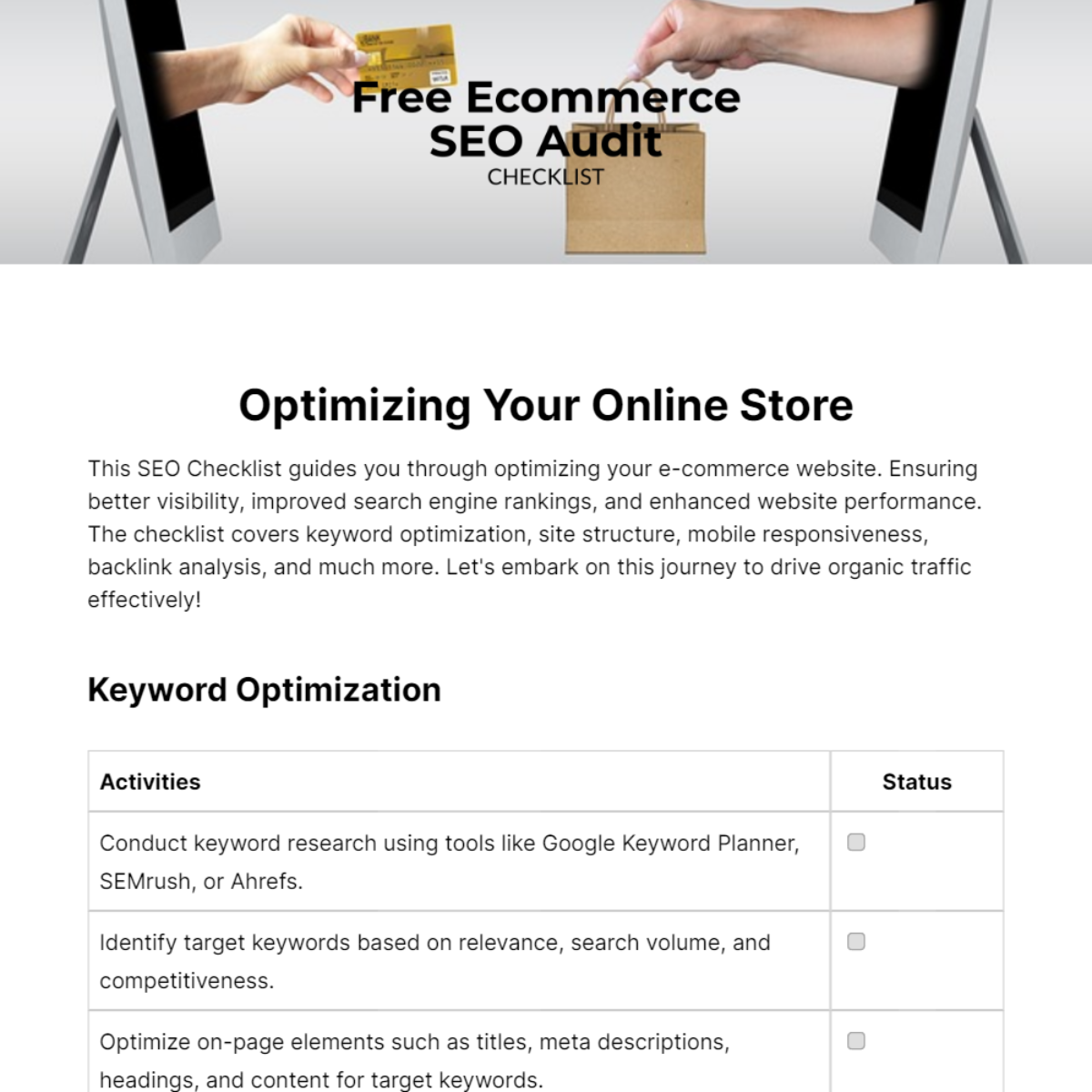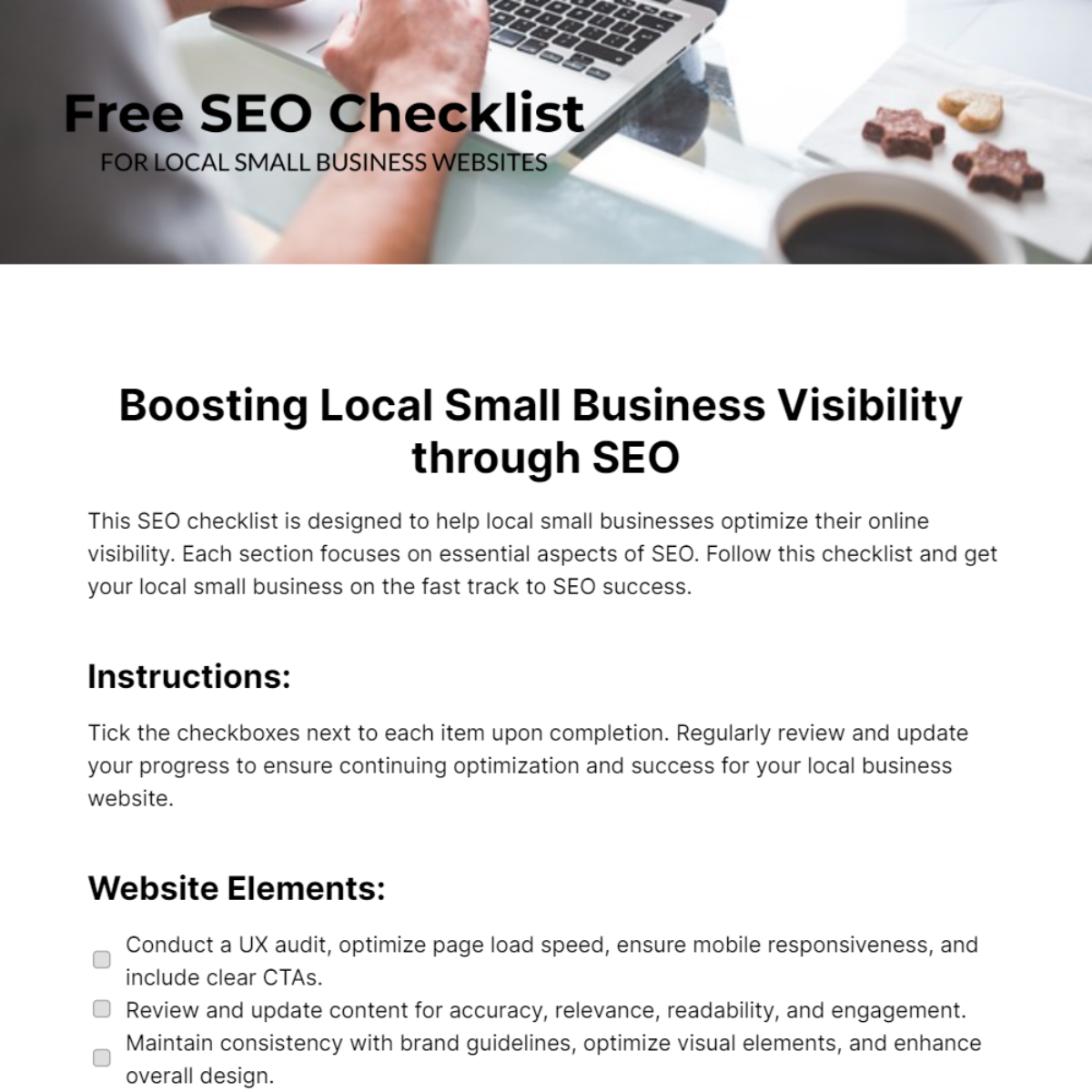Website's Performance and Visibility
Enhancing your website's search engine optimization (SEO) is crucial for boosting online visibility and driving traffic. This one-page SEO checklist provides essential guidelines to optimize your website effectively. Use checkboxes to mark completed tasks.
Website Analysis
Activities | Status |
Conduct a comprehensive audit of the website's structure, design, and performance. | |
Analyze website traffic using tools like Google Analytics to identify trends and patterns. | |
Evaluate user experience (UX) and identify areas for improvement, such as page load speed, mobile responsiveness, and navigation. | |
Check for technical issues like broken links, duplicate content, and crawl errors. | |
Assess on-page elements like meta tags, headings, and internal linking structure for optimization opportunities. | |
Review conversion paths and funnels to improve goal completions and user engagement. |
Keyword Research
Activities | Status |
Identify relevant keywords and phrases related to the website's products, services, and target audience. | |
Use keyword research tools like Google Keyword Planner, SEMrush, or Ahrefs to discover search volume, competition, and trends. | |
Analyze competitor keywords to identify gaps and opportunities. | |
Group keywords into themes or topics to guide content creation and optimization efforts. | |
Prioritize keywords based on search volume, relevance, and competitiveness. | |
Continuously monitor and update keyword strategy to adapt to changes in search behavior and industry trends. |
Content Optimization
Activities | Status |
Optimize existing content by incorporating targeted keywords naturally into headings, meta tags, and body text. | |
Improve readability and engagement by formatting content with subheadings, bullet points, and multimedia elements. | |
Update outdated or underperforming content with fresh information and insights. | |
Ensure content aligns with user intent and provides valuable answers or solutions to their queries. | |
Implement schema markup to enhance search engine visibility and enrich search results with structured data. | |
Optimize images and multimedia files for faster loading times and improved user experience. |
Link Building
Activities | Status |
Identify relevant and authoritative websites for link opportunities through competitor analysis, industry directories, and influencer outreach. | |
Create compelling content assets like infographics, guides, or research reports to attract backlinks naturally. | |
Reach out to webmasters and influencers to request backlinks or guest posting opportunities. | |
Participate in relevant online communities, forums, and social media platforms to build relationships and earn mentions or citations. | |
Monitor backlink profiles regularly to identify and address any toxic or spammy links. | |
Measure the impact of link-building efforts on organic search rankings and traffic. |
SEO Reporting
Activities | Status |
Set up regular reporting intervals (weekly, monthly, quarterly) to track key performance indicators (KPIs) such as organic traffic, keyword rankings, and conversion rates. | |
Use tools like Google Data Studio, Moz, or SEMrush to create customized SEO reports that visualize performance metrics and trends. | |
Analyze report data to identify successes, challenges, and areas for improvement. | |
Provide actionable insights and recommendations based on data analysis to guide future SEO strategy. | |
Communicate findings and progress to stakeholders, such as clients or management, in clear and concise reports or presentations. | |
Continuously refine reporting processes and metrics to ensure alignment with business goals and objectives. |
Created by: [Your Name]
